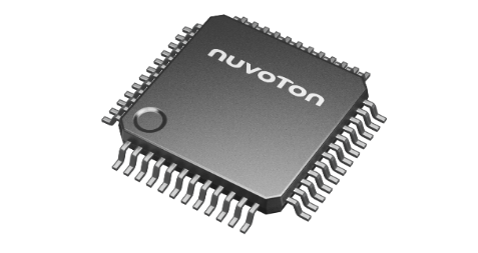Feed aggregator
Візит топових компаній з Фінляндії
🇺🇦🇫🇮 Представники топових компаній з Фінляндії під егідою Rebuild Ukraine Office завітали до нашого університету для налагодження співпраці
New chip reveals Microsoft’s quantum computing playbook

We took a step back and said, ‘OK, let’s invent the transistor for the quantum age, said Chetan Nayak, corporate VP of Quantum Hardware at Microsoft. He was talking about the company’s Majorana 1 chip, which marks a notable development in quantum computing. EDN’s sister publication EE Times takes a closer look at this chip’s topological qubit architecture while providing a technical glimpse of competing products: Google’s Willow processor and the University of Science and Technology of China’s Zuchongzhi 3.0 chip.
Read the full story at EE Times.
Related Content
- The Basics Of Quantum Computing
- Exploring the Frontiers of Quantum Computing
- Power supply management in quantum computers
- Hardware security entering quantum computing era
- How Intel Quantum Chips Could Retransform Silicon-Based Computing
The post New chip reveals Microsoft’s quantum computing playbook appeared first on EDN.
Nuvoton Releases Mass Production Launch of New Industrial BM-ICs
Nuvoton Technology Corporation Japan (NTCJ) has developed new industrial 17-cell BM-ICs “KA49701A” and “KA49702A” for 48V batteries. Mass production starts from April 2025. These products enhance the safety of battery systems and simple safe system construction.
Achievements:- By incorporating fault diagnosis and fail-safe functions within the battery monitoring IC(BM-IC), it is possible to build a safe system without external protection circuits. This contributes to improved safety of the Battery Management System (BMS) and reduced system costs.
- Achieves industry-leading voltage measurement accuracy of +/-2.9mV, allowing maximum utilization of battery capacity.
- Reduces current consumption during operation, enabling long battery drive times. Additionally, by reducing current consumption during shutdown, self-discharge is minimized, allowing for long-distance transportation and long-term storage of battery packs.
The expansion of renewable energy adoption and the development and expansion of data centers of generative AI are progressing. Energy storage systems responsible for stable power supply require larger capacity and higher output batteries. Consequently, the shift from traditional lead-acid batteries to smaller, lighter, and higher energy density lithium-ion batteries (LIB) is accelerating. However, LIBs are more expensive than lead-acid batteries and require systems to prevent fires, leading to increased manufacturing costs.
To address this challenge, we have developed a “48V BM-IC for Industrial Equipment ” equipped with fault diagnosis and fail-safe functions, leveraging our automotive battery control technology cultivated over many years. This product achieves both enhanced battery system safety and reduced system cost for LIB-equipped storage systems. Additionally, with an industry-leading voltage measurement accuracy of +/-2.9mV and low power consumption during both operation and shutdown (1/10 of our previous products), it maximizes battery capacity utilization.
Features:- By integrating fault diagnosis functions and fail-safe functions within the BM-IC, it is possible to build a safe system without external protection circuits. This contributes to improved safety of the BMS and reduced system costs.
The battery monitoring IC plays a role in ensuring the system operates safely during anomalies such as overcharging or over-discharging of the battery. However, if the main circuits performing cell voltage measurements such as the AD converter or multiplexer of the BM-IC fail, it needs to ensure system safety with external protection circuits, but this increases board area and system cost. The major internal circuits of this product are equipped with diagnostic functions and fail-safe functions. This diagnostic function can detect main circuit failures and control·the cut-off switch, achieving both enhanced BMS safety and reduced system cost.
2. Achieving industry-leading voltage measurement accuracy of +/-2.9mV allows maximum utilization of battery capacity.
By reducing noise levels on the 16-bit AD converter and incorporating a digital filter, we have achieved industry-leading voltage measurement accuracy of +/-2.9mV. By improving voltage measurement accuracy, maximum Battery capacity can be used. Furthermore, precise voltage measurement has been achieved over a wide temperature range. It is also suitable for applications requiring high voltage measurement accuracy in cold and hot environments, such as stationary battery systems compliant with the Chinese national standard.
3. Reducing current consumption during operation realizes long-term Battery operation. Additionally, by reducing current consumption during shutdown, self-discharge can be minimized, enabling long-distance transportation and long-term storage of battery packs.
By shortening the cell voltage measurement time, which has high power consumption, operating current has been achieved at 260μA, less than 1/10th of our previous standards. This enables long battery drive times. Also, optimization of the circuit design has reduced shutdown current consumption to 0.1μA or less. Using our IC, self-discharge can be minimized, preventing deterioration due to over-discharge when LIBs are transported over long distances and stored long-term.
Applications:
Battery systems (Energy Storage System), backup unit for data centers,
Automated guided robots, electric bicycles, drones, etc.
Product name:
BM-IC for industrial equipment
KA49701A, KA49702A
| Model Number | KA49701A | KA49702A | ||
| Charge/discharge control method | Low-side switch | High-side switch | ||
| Maximum number of connected cells | 17 cells | |||
| Rated voltage | 85V | |||
| Voltage Measurement Accuracy | +/- 2.9mV | |||
| Current Measurement Accuracy | +/- 1.0% | |||
| Current Consumption
(Operating) |
260μA | |||
| Current Consumption
(Shutdown) |
0.1μA max | |||
Package |
QFP-48pin (7mm x 7mm) | |||
The post Nuvoton Releases Mass Production Launch of New Industrial BM-ICs appeared first on ELE Times.
Infineon receives approval for funding under the EU Chips Act – IPCEI funding drives innovation projects in Europe forward
The European Commission today approved funding under the European Chips Act for the Infineon Technologies AG Smart Power Fab in Dresden. The official funding approval from the Federal Ministry for Economic Affairs and Climate Action (BMWK), which is responsible for the disbursement of EU Chips Act funding, is still pending and is expected within the next few months. Additionally, the Smart Power Fab is already receiving support under the European Commission’s IPCEI ME/CT (“Important Project of Common European Interest on Microelectronics and Communication Technologies”) innovation program. The total funding for the Dresden site amounts to around one billion euros. Construction began in March 2023 and is progressing successfully. The Fab opening is planned for 2026.
“This government-supported investment by Infineon strengthens the position of Dresden, Germany and Europe as a semiconductor hub and promotes a state-of-the-art innovation and production ecosystem for microelectronics,” says Jochen Hanebeck, CEO of Infineon. “We are increasing semiconductor capacity in Europe and thus helping secure stable supply chains in automotive, security and industrial fields.”
Infineon is investing a total of five billion euros in the expansion of its Dresden site. The German federal government previously approved the early start of the project. The new development will create up to 1,000 new jobs, not including the additional jobs created in the ecosystem of the investment. Experts assume a positive job effect of 1:6. The core of the Smart Power Fab will focus on technologies that further accelerate decarbonization and digitalization for example by driving energy-efficient power solutions for Artificial Intelligence.
In addition to the funding for the expansion of manufacturing in Dresden, Infineon is also leveraging the IPCEI ME/CT innovation program to drive investments in research and development at other corporate locations. Between 2022 and 2027 Infineon will have invested 2.3 billion euros in innovation projects at its sites in Germany and Austria, concentrated in the fields of power electronics, analog/mixed-signal technologies, sensor technologies and radio frequency applications.
As part of the EU funding programs, Infineon is furthermore planning comprehensive measures to promote partnership between science and industry. A central element is close collaboration with European universities, research institutions and start-ups. Infineon offers talented young individuals a platform for developing and advancing sustainable innovations. These activities promote the hands-on application of scientific knowledge and strengthen Europe’s position as an innovation hub.
The post Infineon receives approval for funding under the EU Chips Act – IPCEI funding drives innovation projects in Europe forward appeared first on ELE Times.
Industry’s first space-grade 200V GaN FET gate driver from TI helps satellites become smaller and more efficient
Ranging from 22V to 200V and supporting different radiation levels, TI’s new family of gate drivers enables designers to improve power system efficiency for every type of space mission
What’s newNational, 20 February 2025: Texas Instruments (TI) today announced a new family of radiation-hardened and radiation-tolerant half-bridge gallium nitride (GaN) field-effect transistor (FET) gate drivers. This family of gate drivers includes the industry’s first space-grade GaN FET driver that supports up to 200V operation. The devices are available in pin-to-pin compatible ceramic and plastic packaging options and support three voltage levels. TI’s advancements in space-grade power products enable engineers to design satellite power systems for all types of space missions using just one chip supplier.
Why it mattersSatellite systems are growing increasingly complex to meet the demand for more on-orbit processing and data transmission, higher-resolution imaging, and more precise sensing. To improve mission capabilities, engineers strive to maximize electrical power system efficiency. TI’s new gate drivers are designed to accurately drive GaN FETs with fast rise and fall times, improving power-supply size and density. This allows a satellite to more effectively use the power generated by its solar cells to perform mission functions.
“Satellites perform critical missions, from providing global internet coverage to monitoring climate and shipping activity, enabling humans to better understand and navigate the world,” said Javier Valle, product line manager, Space Power Products at TI. “Our new portfolio enables satellites in low, medium and geosynchronous earth orbits to operate in the harsh environment of space for an extended period of time, all while maintaining high levels of power efficiency.”
For more information, read the technical article, “How you can optimize SWaP for next-generation satellites with electronic power systems.”
More detailsOptimizing size, weight and power (SWaP) using GaN technology can:
- Improve electrical system performance.
- Extend mission lifetimes.
- Reduce satellite mass and volume.
- Minimize thermal management overload.
Designers can use the family for applications spanning the entire electrical power system.
- The 200V GaN FET gate driver is suitable for propulsion systems and input power conversion in solar panels.
- The 60V and 22V versions are intended for power distribution and conversion across the satellite.
TI’s family of space-grade GaN FET gate drivers offers different space-qualified packaging options for the three voltage levels, including:
- Radiation-hardened; Qualified Manufacturers List (QML) Class P and QML Class V in plastic and ceramic packages, respectively.
- Radiation-tolerant Space Enhanced Plastic (SEP) products.
John Dorosa, a TI systems engineer, will present “How to easily convert a hard-switched full bridge to a zero-voltage-switched full bridge” on Tuesday, March 18, 2025, at 9:20 a.m. Eastern time at the Applied Power Electronics Conference in Atlanta, Georgia. This industry session will feature TI’s TPS7H6003-SP gate driver.
The post Industry’s first space-grade 200V GaN FET gate driver from TI helps satellites become smaller and more efficient appeared first on ELE Times.
Rohde & Schwarz successfully validates ML-enhanced channel-state information feedback with Qualcomm for 5G-Advanced
In the evolving 5G landscape, channel-state information (CSI) is essential for optimizing network performance and user capacity. CSI enables efficient channel-dependent scheduling and adaptive modulation, ensuring robust high-speed communications between base station and mobile device. AI/ML- driven CSI enhancements promise even greater efficiency, reduced overhead, and improved user experience in 5G-Advanced and future 6G networks. However, implementation across vendors will be challenging. Rohde & Schwarz and Qualcomm Technologies have achieved an industry milestone by demonstrating cross-vendor interoperability of ML-based CSI feedback enhancements, to be showcased at MWC 2025 in Barcelona.
Rohde & Schwarz today announced the successful validation of machine learning-based channel-state information feedback compression for 5G-Advanced networks with support from Qualcomm Technologies, Inc., demonstrating a significant increase in throughput compared to conventional methods. This breakthrough confirms the feasibility of cross-vendor AI implementation in wireless communications with the aim of enhancing network performance.
The two companies achieved interoperability between ML models running on a mobile form factor reference design powered by a Qualcomm® 5G Modem-RF and the CMX500 5G one-box signaling tester from Rohde & Schwarz, implementing enhanced CSI feedback mechanisms studied in 3GPP Release 18 and 19. The setup enables efficient compression of the channel state based on CSI reference signal (CSI-RS) measurements, optimizing massive MIMO operations critical for 5G networks. This validation demonstrated that the throughput performance improved by 51% compared to Type I feedback followed by wideband precoding, as defined in 3GPP Release 15.
Both parties employed separate training approaches for AI models on the network and device side. Compatibility was achieved through specified reference models. Utilizing autoencoder architecture, Qualcomm Technologies implemented a proprietary device encoder, while Rohde & Schwarz developed a decoder for its network emulator. The CMX500 one-box tester supports flexible ML model integration through the Open Neural Network eXchange (ONNX) format, enabling users to implement and validate their own AI architectures for wireless testing scenarios.
Cross-vendor interoperability as milestone for future standardizationThe successful interoperability proves that two-sided ML-based air interface enhancements can be effectively implemented and tested across equipment coming from different vendors. It is a significant step toward implementing AI-enhanced wireless communications, providing a framework for testing and verification essential for the commercial deployment of 5G-Advanced features. It also serves as a crucial milestone for the upcoming standardization for a future 6G standard, where AI is expected to be natively integrated into the air interface design from the beginning. Hence, cross-vendor AI interoperability will be an essential foundation for future wireless systems.
Christoph Pointner, Senior Vice President of Mobile Radio Testers at Rohde & Schwarz, says: “The capability of our CMX500 to implement and validate ML-based signal processing highlights the need for evolving test and measurement alongside wireless innovation. Thanks to ONNX support, customers can integrate their own ML architectures, making the CMX500 a versatile platform for AI-enhanced wireless testing. Validating interoperability with Qualcomm Technologies’ encoder confirms our commitment to establishing essential verification frameworks for AI-driven communications, from 5G-Advanced to future 6G systems.”
John Smee, Senior Vice President, Engineering, Qualcomm Technologies, Inc. adds, “In this new 5G- Advanced era of connectivity, and as we look toward 6G, AI is even more critical not just for the best user experiences but also for network performance. The joint research between Qualcomm Technologies and Rohde & Schwarz validates that AI-based CSI will help ensure these performance enhancements.”
Rohde & Schwarz will present the CSI feedback enhancements demonstration together with Qualcomm Technologies live at Mobile World Congress 2025 at Fira Gran Via in Barcelona in hall 5, booth 5A80. A video preview of the demonstration is available here:
https://www.rohde-schwarz.com/_251220-1545553.html
For further information on Rohde & Schwarz solutions for AI and ML in 6G networks, visit: www.rohde-schwarz.com/6G-AI-ML
The post Rohde & Schwarz successfully validates ML-enhanced channel-state information feedback with Qualcomm for 5G-Advanced appeared first on ELE Times.
📰 Газета "Київський політехнік" № 7-8 за 2025 (.pdf)
Вийшов 7-8 номер газети "Київський політехнік" за 2025 рік






